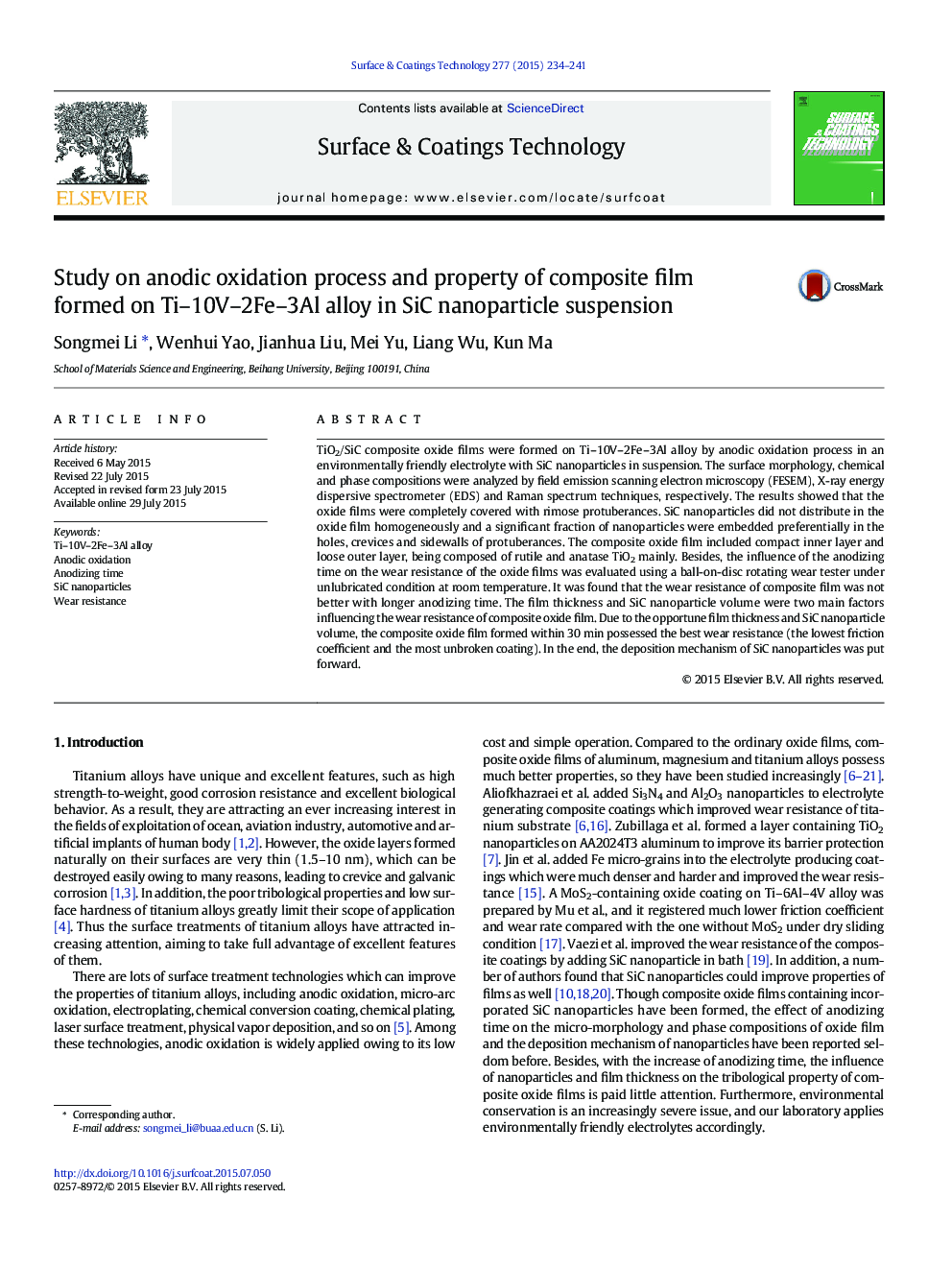| Article ID | Journal | Published Year | Pages | File Type |
|---|---|---|---|---|
| 1656863 | Surface and Coatings Technology | 2015 | 8 Pages |
Abstract
TiO2/SiC composite oxide films were formed on Ti-10V-2Fe-3Al alloy by anodic oxidation process in an environmentally friendly electrolyte with SiC nanoparticles in suspension. The surface morphology, chemical and phase compositions were analyzed by field emission scanning electron microscopy (FESEM), X-ray energy dispersive spectrometer (EDS) and Raman spectrum techniques, respectively. The results showed that the oxide films were completely covered with rimose protuberances. SiC nanoparticles did not distribute in the oxide film homogeneously and a significant fraction of nanoparticles were embedded preferentially in the holes, crevices and sidewalls of protuberances. The composite oxide film included compact inner layer and loose outer layer, being composed of rutile and anatase TiO2 mainly. Besides, the influence of the anodizing time on the wear resistance of the oxide films was evaluated using a ball-on-disc rotating wear tester under unlubricated condition at room temperature. It was found that the wear resistance of composite film was not better with longer anodizing time. The film thickness and SiC nanoparticle volume were two main factors influencing the wear resistance of composite oxide film. Due to the opportune film thickness and SiC nanoparticle volume, the composite oxide film formed within 30Â min possessed the best wear resistance (the lowest friction coefficient and the most unbroken coating). In the end, the deposition mechanism of SiC nanoparticles was put forward.
Related Topics
Physical Sciences and Engineering
Materials Science
Nanotechnology
Authors
Songmei Li, Wenhui Yao, Jianhua Liu, Mei Yu, Liang Wu, Kun Ma,
